
views
Filing a Petition for Custody

Obtain the appropriate form from the Superior Courts of California to open a family law case. The state's petition for custody and support of minor children is available for unmarried parents who have signed a voluntary declaration of paternity, have legally adopted a child together, or have been determined parents of the child in connection to another legal proceeding. You will need a petition for custody and support of minor children, a summons, and a declaration under the Uniform Child Custody Jurisdiction and Enforcement Act (UCCJEA). You can find these forms online or at your local superior court. If you go online, you can fill out the form directly in your browser and save it or print it. However, if you use this option, make sure you clear the form before you leave so no one else can see the information you entered. Forms can be found at the following links: http://www.courts.ca.gov/documents/fl260.pdf, http://www.courts.ca.gov/documents/fl210.pdf, http://www.courts.ca.gov/documents/fl105.pdf

Fill out the forms. Fill out all the required forms completely. If you have any questions, talk to your county court's family law facilitator or contact the self-help center at http://www.courts.ca.gov/selfhelp-selfhelpcenters.htm. A child custody and visitation application attachment form is optional. You aren't required to file it with the court, but you can use it as a checklist to make sure you don't leave anything out of your request.

Make at least two copies of all of your completed forms. You'll be giving the original to the court. You'll need a copy to give to the child's other parent and a copy to keep for yourself.

File your forms in the appropriate court. You will have to pay a filing fee of several hundred dollars to file your petition and have it considered by a judge. If you cannot afford the filing fee, you can fill out a form requesting a fee waiver. Filing fees are waived for low-income litigants such as those already receiving public benefits including food stamps or SSI.

Serve the other parent. Someone over 18 must give the papers you filed to the other parent along with a blank response form and a blank declaration. These forms can be found here: http://www.courts.ca.gov/documents/fl270.pdf and http://www.courts.ca.gov/documents/fl105.pdf UCCJEA. You cannot serve the forms yourself. If necessary, you can hire a private process serving company or contact the sheriff's department about completing the service of process. If you go that route you'll be charged a fee. Make sure the server fills out the proof of service form for you so you can file it at the clerk's office before the date of your hearing.
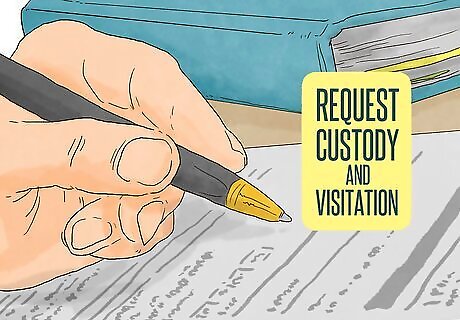
Fill out a request for order and a child custody and visitation application attachment. Now that you've completed the steps to open a family law case, you can make a request for custody and visitation.

Make at least two copies of the completed forms. As with your petition and related forms, you'll need to make a copy for yourself as well as one for the other parent, and file the original with the court.

File your forms in the same court where your filed your petition. You will have to pay another filing fee, or ask for a fee waiver as you did when you filed your petition. The clerk will schedule either mediation or a court date. Some courts require parents in custody proceedings to attend mediation and try to agree on a parenting plan before having a formal hearing in court. Some courts also require parents to attend an orientation before mediation. The orientation is a class where parents are taught the aspects of a parenting plan and basic court procedures.

Serve the other parent. Following the same process as when you got someone to serve the petition, you'll need to get the other parent served with these forms along with a blank responsive declaration.

Attend mediation. A trained mediator may be able to help you and the other parent come up with an agreed parenting plan. If this happens, the mediator will help you write it up and the judge will sign it, making it a final order. Mediation is a less formal process than a court hearing. The mediator will meet with each parent individually or with both of you together and ask questions about your history, relationship, and the child's relationship. The mediator's goal is for the parents to work together to arrive at a parenting plan that represents the best interests of the child.

Attend your hearing. If you don't reach an agreement during mediation, you'll have to present your case to the judge. Before your hearing, read all of your court papers and make sure you understand them. You'll need to bring copies of these papers with you to your hearing as well as any evidence you want to present regarding the custody of your child. Evidence you bring may include photographs or documents relevant to the case or the child's development. You also may bring witnesses to testify to the best interests of the child. After the hearing, the judge will make a decision and sign the order. Court staff may prepare the order, or you may be asked to fill out the order for the judge to sign.
Establishing Custody while Establishing Paternity
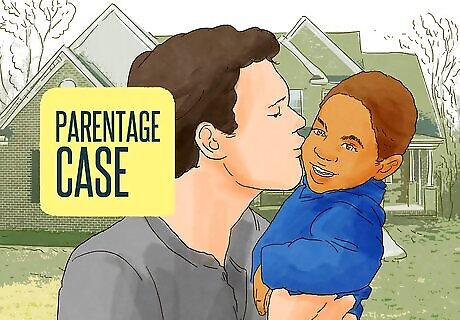
File a parentage case in the county where your child lives. To get a parentage case started, you must file a petition, summons, and UCCJEA petition. Either parent can start a parentage case. If you're not sure where the child lives, you can start the parentage case in the county where you live. You only need a judge to establish parentage of your child if you and the child's other parent were unmarried when the child was born. You can get the forms you need either online or at your local superior court. You can fill in, save, and print the online form directly from your browser. If you do, don't forget to clear the form when you're done so no one else can view the information you entered.

Fill out the child custody and visitation application attachment. If you want the judge to make a ruling about the custody of your child, include this form with your parentage petition. If you also want the judge to enter a child support order, you must include either an income and expense declaration or a simplified financial statement. These forms area available here: http://www.courts.ca.gov/documents/fl150.pdf and http://www.courts.ca.gov/documents/fl155.pdf.

Have your forms reviewed by a family law facilitator. If you don't want to hire an attorney, or can't afford one, you still should get a legal professional to review your forms before you file them and make sure you filled everything out correctly and have all the forms you need.

Make at least two copies of all of your forms. Once you've verified that everything is filled out correctly, make copies so you'll have them for your records.

File your forms with the clerk of court. Your original documents will go to the judge. The clerk will stamp "filed" on all your copies. You'll have to pay court fees of several hundred dollars to file your petition and open the case. If you can't afford the filing fees, you can request a waiver.

Have the other parent served. Get someone over the age of 18 who isn't involved in your case to give file-stamped copies of your parentage papers, along with a blank response form and a blank UCCJEA declaration. Include a blank income and expense declaration as well if you've asked the judge to make a child support order. Make sure the person who serves those papers on the other parent also fills out a proof of service form so you can file that with the clerk of court.
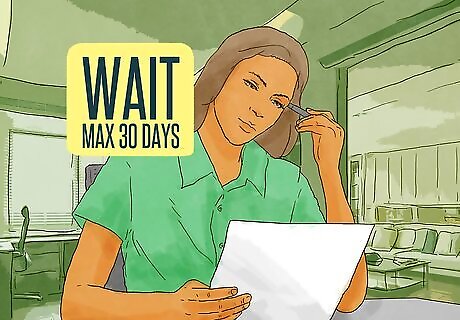
Wait for the other parent to respond. The other parent has 30 days to respond to your parentage petition. What happens after that depends on how he responds. If the other parent doesn't respond and there is no agreement on parentage, child custody and visitation, or child support, your case is called a "true default." This means you can fill out the appropriate forms and the final judgment will reflect whatever you want in terms of parentage, child custody, visitation, and child support. Provided all the forms are filled out correctly, the judge will sign your orders without you ever having to appear in court. If the other parent doesn't respond but there is an agreement on parentage, child custody and visitation, or child support, your case is called a "default with agreement." Fill out the appropriate forms and file them with the clerk. The judge will review them and enter a judgment without either parent needing to appear in court. If the other parent filed a response but you still haven't reached an agreement on parentage, child custody and visitation, or child support, your case becomes a contested case. Usually you would file and serve a form to set a trial date, but the procedure varies among courts. If the other parent filed a response and you do have an agreement on parentage, child custody and visitation, or child support, you can fill out forms stipulating to that fact and file them in court. The judge will review your agreement and enter a judgment without either parent having to appear in court.
Establishing Custody when Filing for a Restraining Order

Get the forms you need from the Superior Courts of California. You qualify for a domestic violence restraining order if you and the person you want to restrain are dating or live together, or if you used to date or live together and have since separated. If you want a domestic violence restraining order, you must fill out a request for a restraining order, a notice of court hearing, and a temporary restraining order. These forms are available here: http://www.courts.ca.gov/1264.htm online or at your local superior court. If you get them online, you can fill out the form directly in your browser and print it. If you do, be sure to click the button at the bottom of the form to clear the data you entered. If you are staying at a domestic violence shelter, you may have a staff member or volunteer attorney available to assist you. If you have any questions or find the process difficult, you can seek assistance from your county court's family law facilitator or contact the self-help center. You also can use these resources to have your paperwork reviewed and make sure everything's in order before you file.
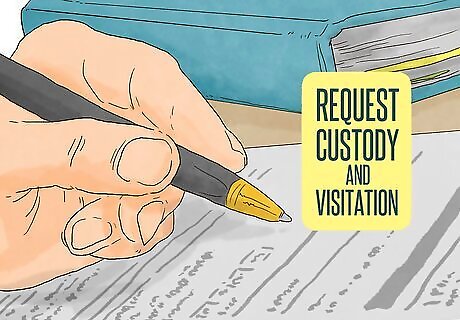
Fill out a request for child custody and visitation orders. If you have children with the person you're attempting to restrain, you can request the judge grant you custody of those children when you request the restraining order. If necessary, you also may fill out a request for a no travel with children order, which would restrict the other parent's ability to travel with your child to another county in California, another state in the United States, or another country. You also will fill out a child custody and visitation order. If the judge approves your request, she will sign the order along with your temporary restraining order.
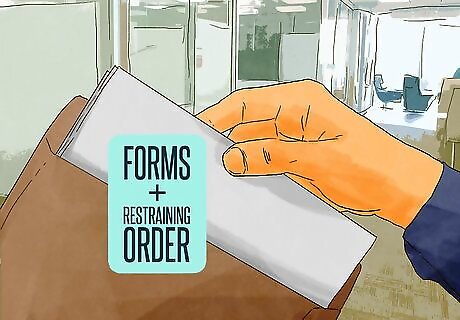
Attach your child custody forms to their corresponding restraining order forms. The request for child custody and visitation should accompany your request for a domestic violence restraining order, while your child custody and visitation order should accompany your temporary restraining order.

Make at least five copies of your completed forms before you file. You will need to file the original, but you'll need one copy for yourself and one copy for the person you want the court to restrain. The extra copies you should keep in a safe place.

File your forms with the appropriate court. Contact your local court to learn the filing procedure, and find out if you need to include any additional forms. You'll need to take your forms to the court clerk, who will give them to the judge. If the judge wants to talk to you or give you more information, the clerk will let you know. The clerk will tell you when to come back and get your paperwork. When you return, you'll find out if the judge signed your temporary order and when your court hearing is scheduled. Your temporary restraining order runs out on the same date as your hearing, so if you want your order extended, you'll have to appear at the hearing. There is no fee for filing a restraining order.
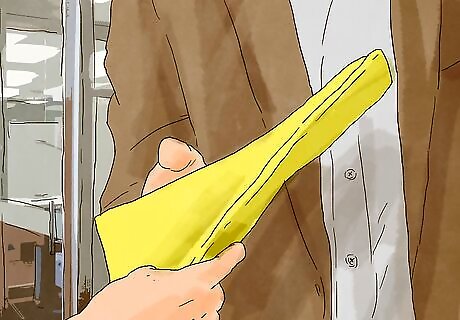
Have the papers served on the person being restrained. You'll have to get a disinterested third party over the age of 18 to give the papers to the person being restrained. You can also hire a private process serving company or talk to the sheriff's office. The judge cannot make the order permanent until the other party is served and has a chance to respond to your allegations in a hearing.

File your proof of service. Once the restrained person has a copy of the documents, have the server fill out the proof of personal service form so you can file it before your hearing. Make copies as you did with all your other documents, because the clerk will stamp your copies "filed" and keep the original when you file it. You'll need to bring a file-stamped copy with you to the hearing.

Attend mediation. If there are child support and custody issues involved, the judge probably will send you to mediation so you can work out a parenting plan with the other parent. The judge may extend the length of your temporary restraining order if you attend mediation. If you and the other parent haven't resolved paternity of the child, you can also deal with that.

Attend your hearing. Arrive early and come prepared with all documents and evidence you need to show the reasons for the restraining order and that you should be granted sole custody of the child. For example, you may bring along photos, police reports, or the child's records and schedules. You may also bring a witness to support you, but she may not be allowed to speak. At the end of the hearing, the judge will issue her orders. If your request was granted, you'll need to fill out a permanent order of protection. The form is available here: http://www.courts.ca.gov/documents/dv130.pdf.

















Comments
0 comment